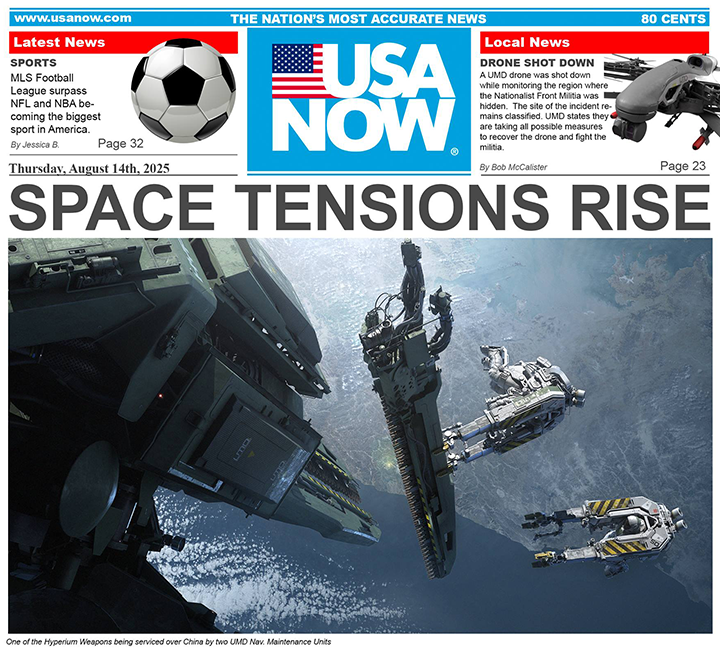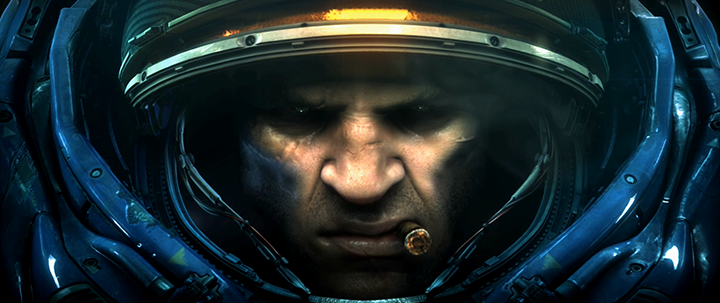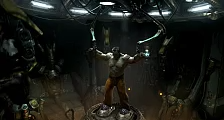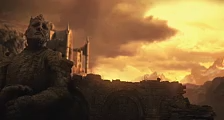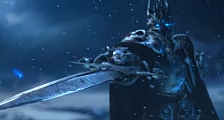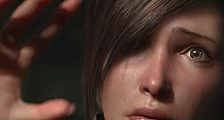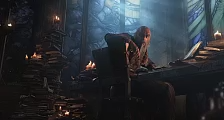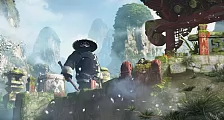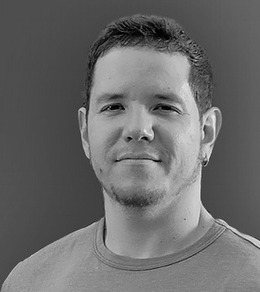
Fausto De Martini

That’s essentially what I was doing. Then there was a guy who would prepare the media for the CD, where you could click on the menus and load the games. He did a quick intro in 3D with the logo of the company. There was a car and it was all animated. I asked him, “How did you do that?” He said, “Oh you know, I used 3ds Max and I did it at home.” That blew me away because I had no idea you could do that kind of stuff at home.
He was a programmer and he knew how to write games. He wrote a very simple vertical shooter where you could see the little ship shooting the enemies. It was cool, but the design was very simplistic. I talked to him and I said, “Hey man, let’s do a game together.” He said, “Oh yeah, that’s cool. I could do the programming.” I said, “Yeah, I could do the design. I would draw everything and come up with the story and all that, and you would have to do the 3D and the programming.” But he said, “Well, I think it would be easier if you learned 3D and you do all the design.” So, that’s kind of how I started. As soon as I started playing with 3D, after I installed 3ds Max, I just fell in love with it.
Since then, I started going more and more into 3D and I decided that’s what I wanted to do. I was going to school in Brazil for marketing and advertising. It was my second year and that’s when I was like, “Okay, I’m going to have to stop doing this because I don’t think I’m going to be working in advertising at an ad agency per se.” I did end up working on ads doing vfx work, but that was a different thing.
After that, I started my career as a freelancer, because the company kind of folded. And the guy that I was working with got an opportunity to do some freelance for a company that was related to doing ads in São Paulo. I got in touch with them, and I ended up doing freelance with them. We got along really well and they liked the work. That’s how I became a freelancer in that space. I was just doing a bunch of freelance to the point that I got a permanent job at a couple companies there. But after doing that type of stuff for a while I was like, “Okay, I think I really like doing this, but I really want to work in entertainment. Especially doing characters, creatures, spaceships, and stuff like that.”
At some point, we got so overwhelmed with work, so I had less spare time to work on that marine. My work hours were long, so I would work on that marine sometimes from 9 p.m. to 3 a.m. It was pretty hectic. That’s kinda how I work on Project EDGE. So, I guess I never stopped doing that type of stuff. [laughs] But to me, the one thing that is very important is if you want to break through the next step in your life, I think you need to bleed. You’re gonna have to put in the effort that other people are sometimes not willing to give.
But anyway, when I was working, I got overwhelmed, and Mario came to me and was like, “You should post that.” There was this one night where I worked until like 7 a.m. We had to work the whole night to deliver a bunch of stuff. And when I got home, I lay down, and something came to my mind. I was like, “You know what? I have to post that. I have to change this lifestyle.” [laughs] I went to work the next day, and asked my friend Mario to help me post the marine on CG Channel and CGTalk. It was a Friday. I posted it and wrote (all in English) that I would love to get a job at Blizzard. Then, on Saturday, my friend called me. He was like, “Hey man, you should check the website. Take a look at CG Channel because your work was plugged on the front page of both websites.” They were being super nice and saying, “Blizzard, take a look at this because the guy wants to work there,” and things like that. And when I opened my email, it was crazy. There was like seven or eight job offers from companies from different parts of the world. I was speechless. I called my dad and I was like, “I don’t know what’s going on here.” [laughs]
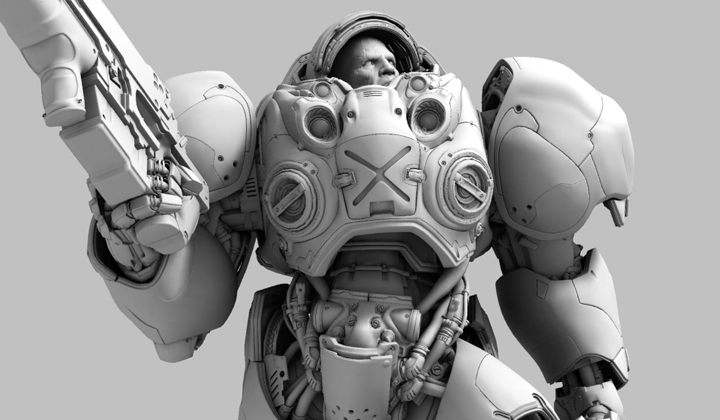
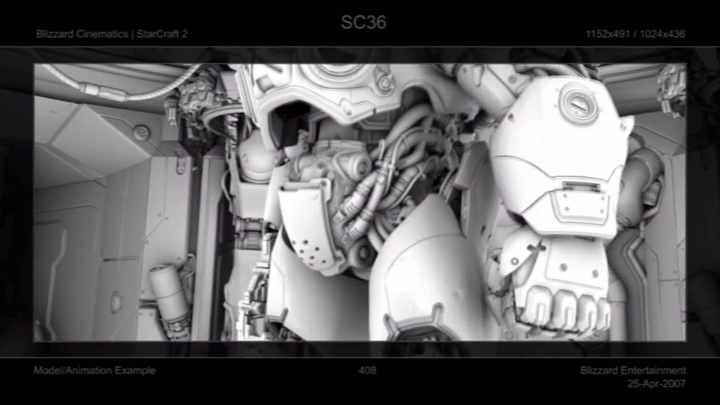
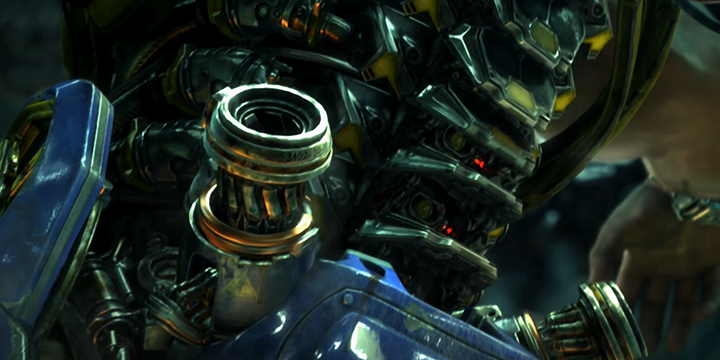
So, I was going through that and Ben inspired me a lot. I kept in touch with him; once in a while we would exchange emails. I was following his career and seeing the stuff he did. Finally, Avatar came out. I went to the theater with Vitaly Bulgarov. We had become very good friends, and he was working at Blizzard at that time. We went to watch the movie together at the first screening at 8 in the morning. Because when I saw the trailer, I was like, “That movie has everything that I love.” Super realistic CG plus all of the beautiful mechanical work. I was really excited to watch it. And once I had watched it, I was in shock with the amount of quality stuff in there.
So, I went and watched a four or five hour presentation at Gnomon about the making of Avatar. I got super inspired, so when I got home I started doing some pieces inspired by Avatar. So, that project was kind of always in the back of my mind. I was like, “Oh man, I hope one day they start making Avatar sequels. I would love to be able to work on that.” What ended up happening was I got an opportunity at some point to do some work on the side for RoboCop. It was being rebooted in a way. A friend of mine, Vitaly, started working on it. Eventually he got me in touch with those guys and I started doing some stuff. RoboCop was another movie that was pretty big when I was growing up. When I was a kid, I used to draw the RoboCop suits. I had a folder that my mom recently showed me, and out of twenty drawings that I had there, ten were of RoboCop suits in multiple poses. I had forgotten about that.
And as the universe works in very interesting ways, I was in charge of completing the design for the silver suit. Eddie Yang was in charge of doing all the blue-sky. I was not involved at that time, but once they got it to a point where they had a rough sketch and model of what they liked, I took that and worked to get it to completion. But it was awesome. It was a honor for me because that movie was also huge for me. It was very inspiring.

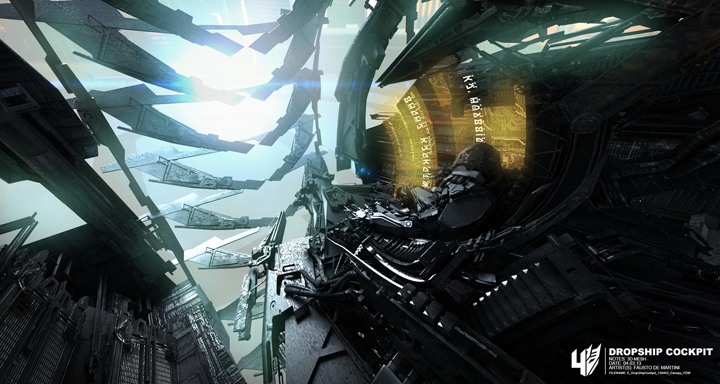
Even working on one movie more full-time, you get another production designer that will want to work with you, and he’ll say, “Hey man, can you do some work on this other show?” So, during late nights, or on the weekends, you can do some work for the other movie. Recently, I ended up doing some work for Independence Day 2, which was a lot of fun. Also, there’s something that I posted recently on my website—the work that I did for this indie movie, Kill Command. It just got released in the UK.
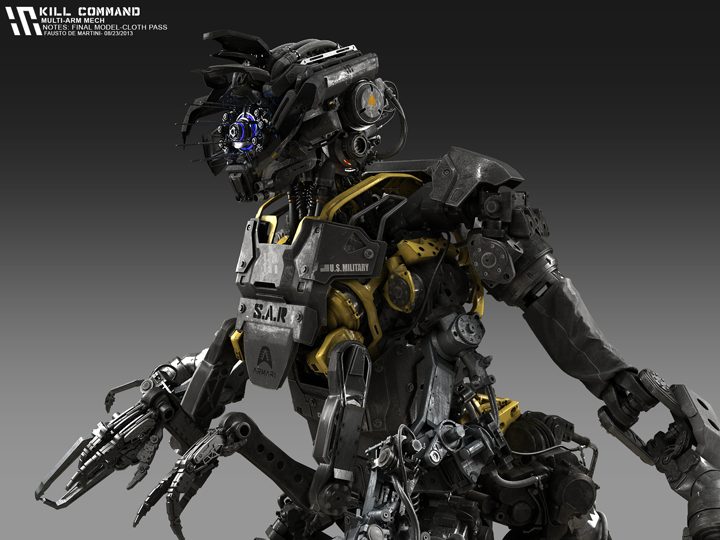
I could speak English and talk to Blizzard, even if it was a very rough English, but they could understand me somewhat. One of the reasons for that was because my dad was always exposed to English. He was in a very good position back in Brazil, and he was traveling to the United States. And my brother spoke English, so I kinda grew up around it. I grew up around computers too. My brother was working with computers. He was interning at a computer company there, Hewlett-Packard. I saw the development of computers since the first Apple. The first video game, the first computer, the first PC—I saw all of that. Because my brother was always bringing one of them home for testing.
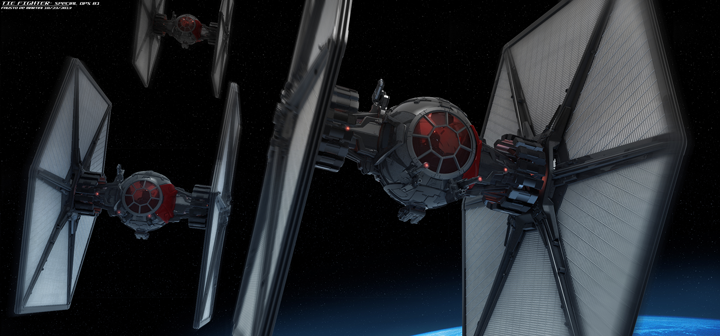
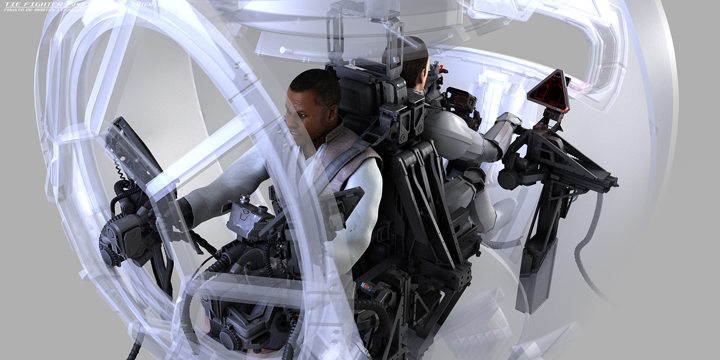
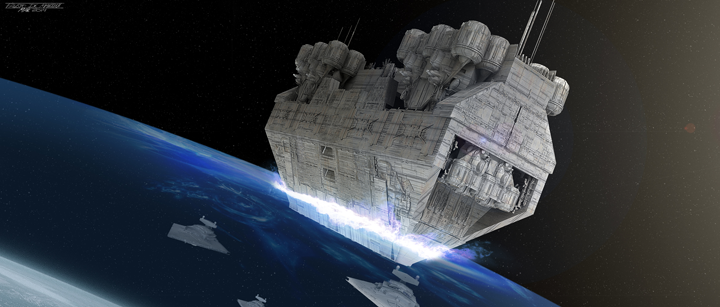
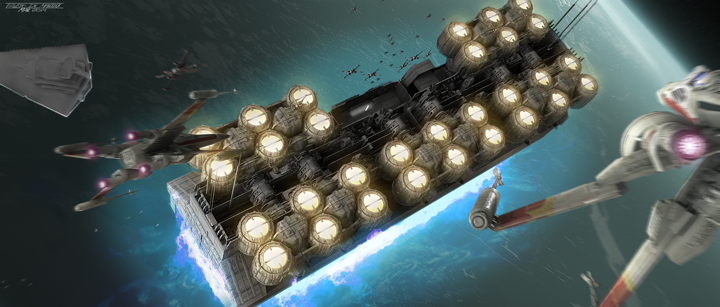
I recently had an opportunity to go to Paris for an event where I was speaking. I took my wife with me on the trip and she ended up meeting a lot of people in the industry. She was like, “Oh my god, everyone’s so nice.” That’s how it usually is. People are super humble, hard-working, and legitimately nice people.
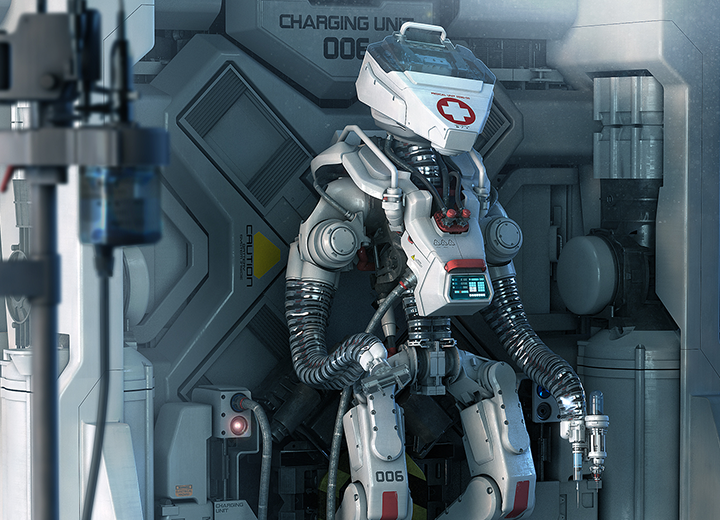
I’m not sure if you have me on Facebook or anything, but I recently released a Patreon for EDGE because I’ve been thinking a lot about what are ways for me to be able to focus and build up more of the universe. I think that that is one of the ways. John Park suggested it. He has a Patreon and he does really well. He does a lot of great work there. He suggested it a while ago, and I decided to do that recently. It’s also a way for me to dedicate more time to the project. So, hopefully that’s going to help with that part a little bit.
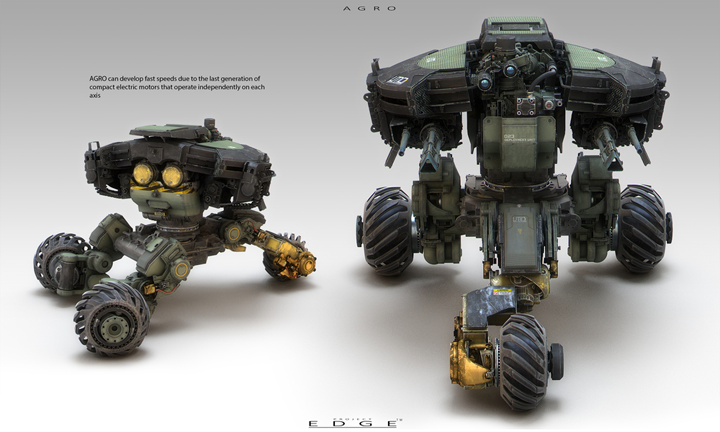
But my intention is to do the published version for EDGE 2, so I’m seeing if I’m gonna be able to do both. If it’s gonna be the eBook and also having the printed version, or just printed. I’ve asked more people what they would like to have. Everyone tells me, “Ah dude, I want to have the physical one.” [laughs] Just because it’s cool, right? But I think at the moment, it was the right thing to do in order to get the project off the ground.

I have this whole story set up for it. I’ve been slowly introducing parts and hinting at the story in specific parts. My intention, with EDGE 3 for example, is to have the story all being established and told. I’m kind of thinking a little bit ahead and putting a couple things in place where I can actually introduce a story at some point that has characters. All of the stuff that I’m establishing right now kind of makes sense, and it’s gonna be used in the story. So, it’s not just like random designs.
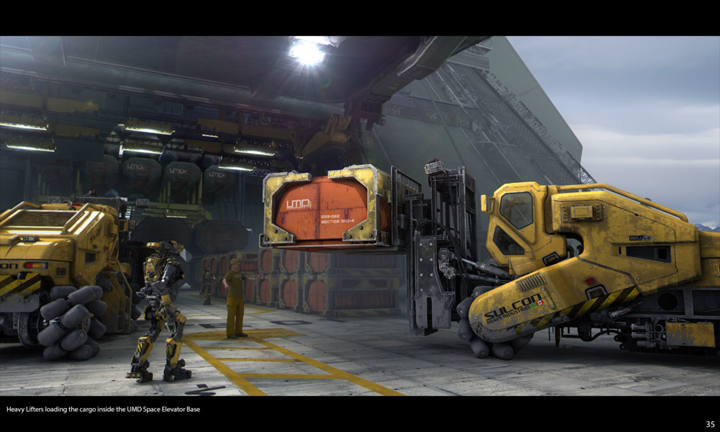
And I’ve been doing these news articles on the EDGE Facebook page. Basically on that page I post updates on the project, and I’ve been posting those updates as news articles. It’s formatted like a newspaper page; it has the images in it and tells a little bit of the story. The conflicts and the stuff that is being generated in them are all sort of connected with the main story.
